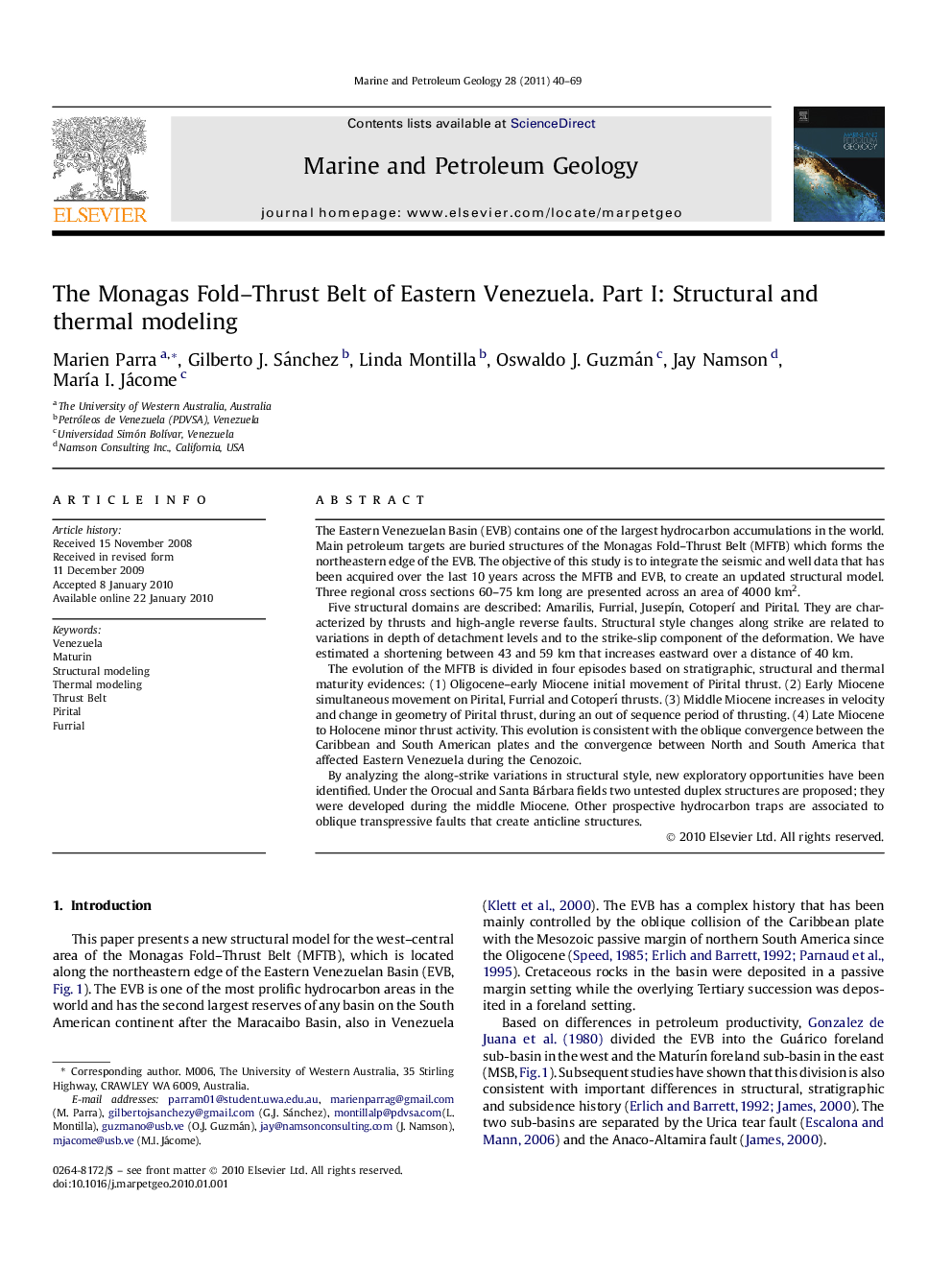| کد مقاله | کد نشریه | سال انتشار | مقاله انگلیسی | نسخه تمام متن |
|---|---|---|---|---|
| 4696333 | 1351668 | 2011 | 30 صفحه PDF | دانلود رایگان |

The Eastern Venezuelan Basin (EVB) contains one of the largest hydrocarbon accumulations in the world. Main petroleum targets are buried structures of the Monagas Fold–Thrust Belt (MFTB) which forms the northeastern edge of the EVB. The objective of this study is to integrate the seismic and well data that has been acquired over the last 10 years across the MFTB and EVB, to create an updated structural model. Three regional cross sections 60–75 km long are presented across an area of 4000 km2.Five structural domains are described: Amarilis, Furrial, Jusepín, Cotoperí and Pirital. They are characterized by thrusts and high-angle reverse faults. Structural style changes along strike are related to variations in depth of detachment levels and to the strike-slip component of the deformation. We have estimated a shortening between 43 and 59 km that increases eastward over a distance of 40 km.The evolution of the MFTB is divided in four episodes based on stratigraphic, structural and thermal maturity evidences: (1) Oligocene–early Miocene initial movement of Pirital thrust. (2) Early Miocene simultaneous movement on Pirital, Furrial and Cotoperí thrusts. (3) Middle Miocene increases in velocity and change in geometry of Pirital thrust, during an out of sequence period of thrusting. (4) Late Miocene to Holocene minor thrust activity. This evolution is consistent with the oblique convergence between the Caribbean and South American plates and the convergence between North and South America that affected Eastern Venezuela during the Cenozoic.By analyzing the along-strike variations in structural style, new exploratory opportunities have been identified. Under the Orocual and Santa Bárbara fields two untested duplex structures are proposed; they were developed during the middle Miocene. Other prospective hydrocarbon traps are associated to oblique transpressive faults that create anticline structures.
Journal: Marine and Petroleum Geology - Volume 28, Issue 1, January 2011, Pages 40–69